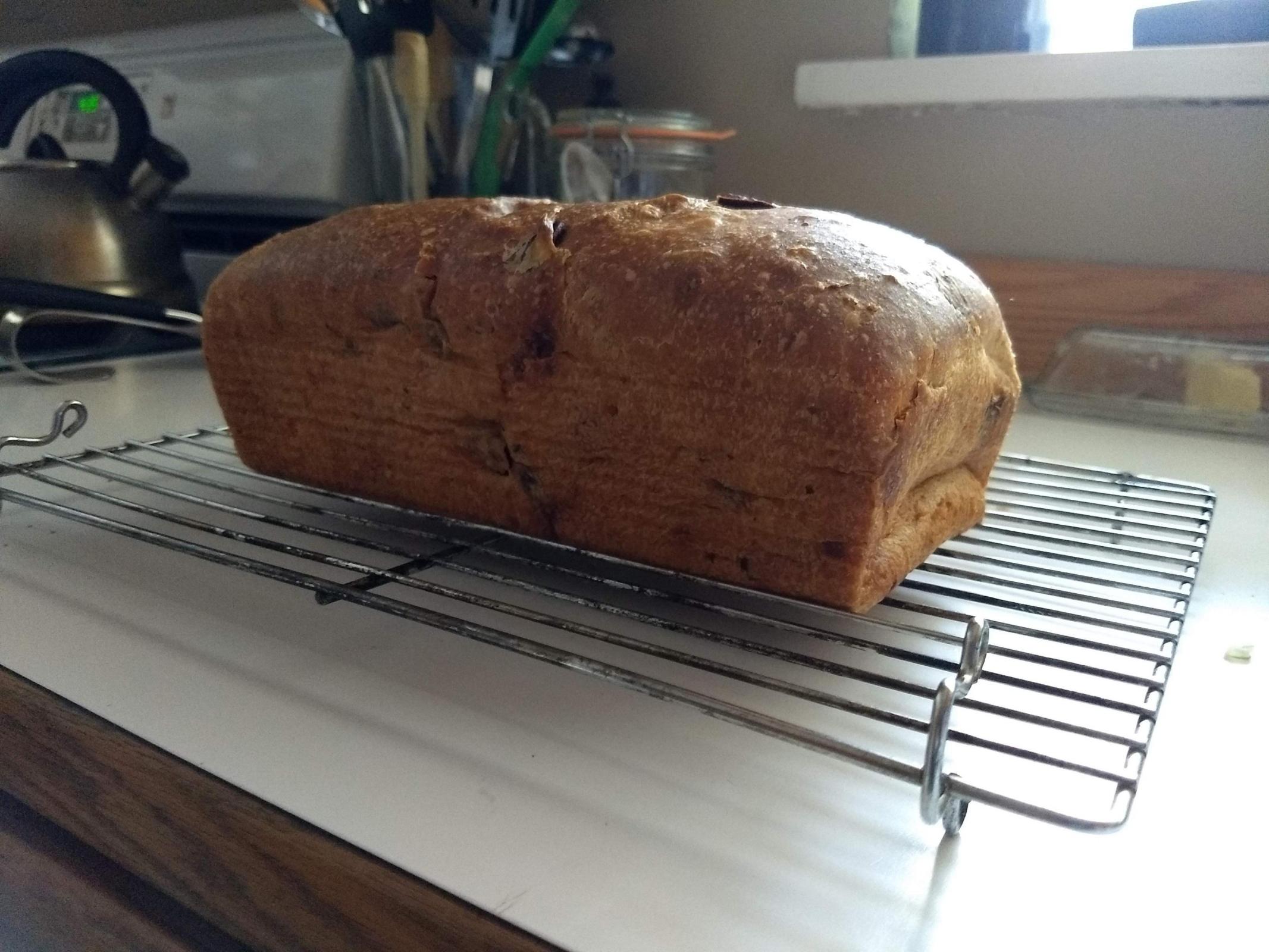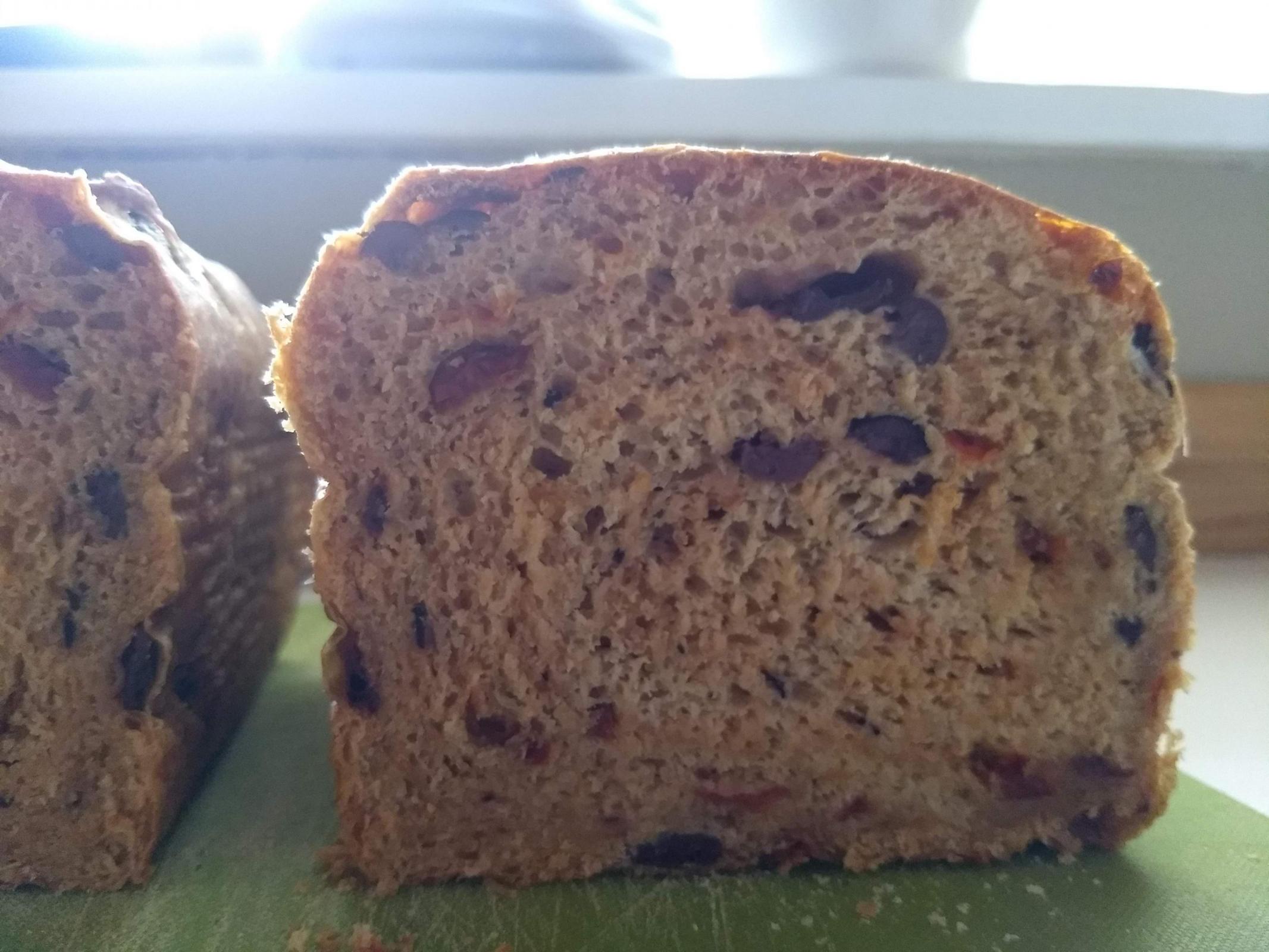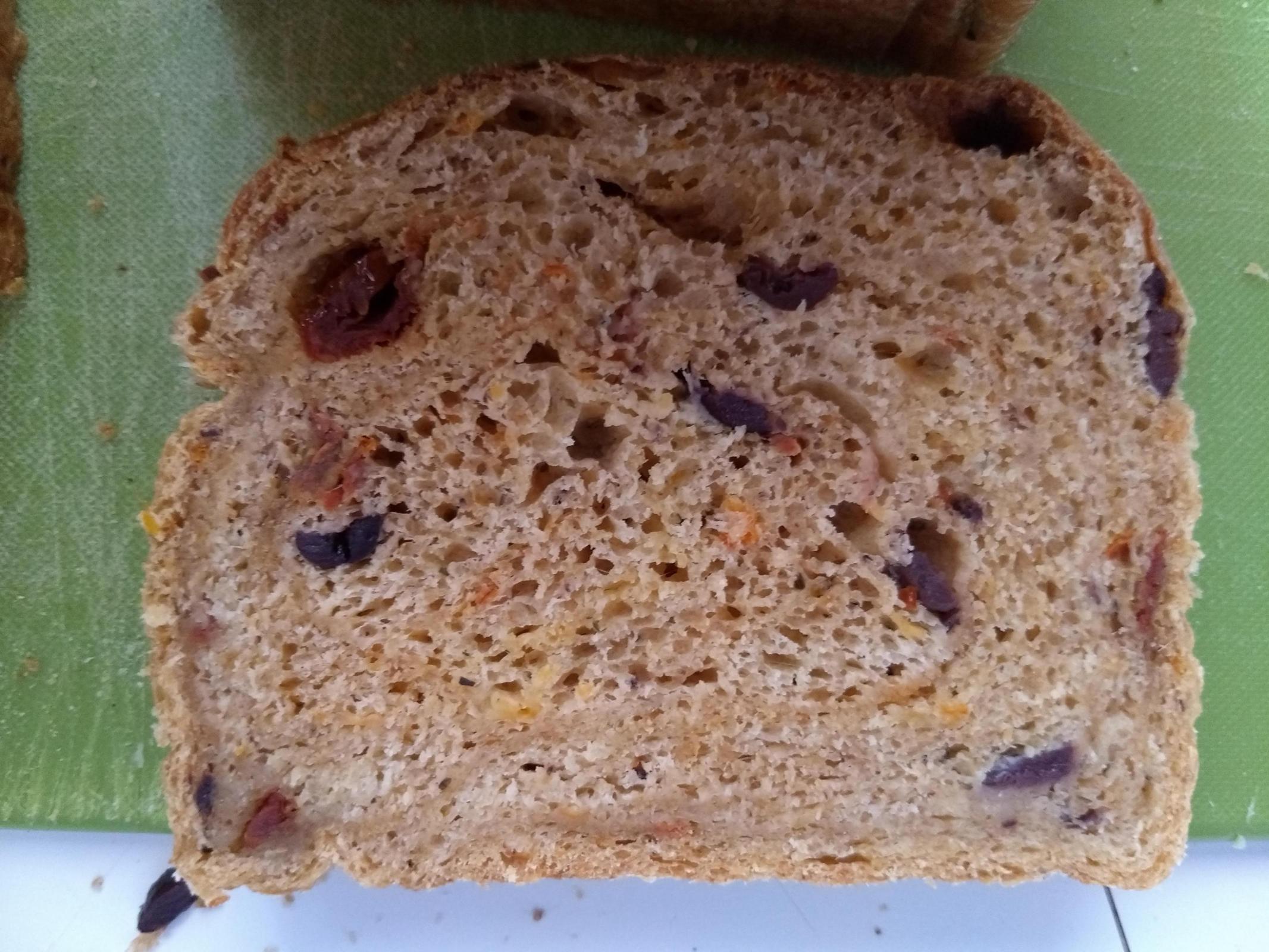I recently made a sourdough version of the casatiello from BBA. I'm vegetarian so I used olives and sun-dried tomatoes in place of salami. The other change was using 24% butter as opposed to 33%. Assuming butter is 18% water and eggs are 75% water, the total hydration is about 66%.
Formula:
- 434 g Cairnspring Mills Sequoia T85 flour
- 11 g Fairhaven Mills whole rye
- 11 g Nash's hard red whole wheat flour
- 184 g water
- 124 g starter
- 124 g butter
- 13 g dehydrated milk solids
- 2 eggs (99 g)
- 7 g salt
- 156 g kalamata olives
- 24 g sun-dried tomatoes, soaked and drained.
- 155 g grated cheddar cheese
- 15 g grated Parmesan cheese
- Dash of Italian herbs.
Process:
- Mix starter, eggs, and water
- Add flour, DMS, and salt. Mix for about 5-10 minutes. Let the dough rest for 30 minutes.
- Add the butter. I mix by hand, so I add about a third of the butter at a time. Mix for about 10-15 minutes and give the dough 20 minutes of rest between each session.
- Add the cheese. Mix for about 10 minutes. (In retrospect I think it would have been better to incorporate the cheese in stages.)
- Add the olives and sun-dried tomatoes. Mix for about 5 minutes.
- Ferment for about an hour, then put the dough in the fridge.
- The next day, take the dough out of the fridge. I put it in the oven for about 90 minutes.
- The olives and tomatoes made shaping difficult for me. I did my best to roll it up into a tube, seal the edges, and put it in a pan.
- The final proof was about 4 hours. I did the final proof in the oven with the oven light on.
- Bake at 350 degrees Fahrenheit for 55 minutes. I made a big rookie mistake here. I bake a lot of whole wheat loaves and I take them out of the pan when I temp them. I took this loaf out of the pan to temp it, and it was only 130 degrees Fahrenheit, and that caused the loaf to get a little squashed. Lesson learned!
I'm happy with this loaf overall. The olives and sun-dried tomatoes add a lovely umami. There is some gumminess near the bottom of the loaf. Any thoughts on how I can improve the crumb?



all those heavy yummy ingredients. Well done!
Got a picture of the bottom? It does look like you could depan the loaf about five to ten minutes before the end of the bake and let it bake naked on the oven rack. That helps dry out and brown the bottom.
Might also try lower in the oven, one shelf down if the pan is a reflective one. The crumb looks more compact at the bottom and crumb bubbles get bigger and more random in shape as one looks up to the top of the loaf. Maybe getting it into the oven sooner might help. You could lay a folded towel over the loaf while proofing so that the top of the loaf stays cool in the oven while the lower half expands during the final rise. I might even be tempted to proof it upside down for and hour using a rolled towel to fill in the empty space. Do you think it was shaped too early?
Mini
I did not take a picture of the bottom. I'll do that the next time I run into a situation like this.
I used a USA pan for this bread. It is somewhat reflective. BBA said to put this bread in the lower third of the oven, so I did bake it one level lower than I usually do.
I still have a heck of a time judging when to end bulk, and the final proof. I do use the poke test, but I'm reluctant to really jam my finger in the dough so I'm not sure how accurate my poke test really is. This dough had no sugar, so fermentation progressed more quickly than in most enriched doughs, so I may have let the final proof go too long.
I'll try a folded towel next time a make a bread like this. I assume it should be a damp towel?
Shaping is another thing I really struggle with. I typically bake about three loaves of bread a week so I just don't get that much practice. Shaping a dough with all these added ingredients is extra challenging for me. It may be the case that I didn't get adequate surface tension. Part of the dough was still cold due to the overnight ferment in the fridge. Should I have let it come completely to room temperature before shaping?
Thanks for the tips! I appreciate it.
I agree with Mini, the bottom crust is mighty pale and along with the compressed wet doughy crumb at the bottom indicates to me that you aren’t getting enough heat into the bottom of the dough during baking. In fact, to prevent this I bake my pan loaves on my baking steel in the lower third of the oven and this works well to get a lot of heat into the dough giving good oven spring.
I wouldn’t worry that you shaped too early. In fact in many pan loaves you can do one rise. So some of my fanciest looking milk breads with different flavored dough braided or rolled together get only one rise. So after mixing to full gluten development I shape and do one rise until the dough is fully proofed then bake. So in reality for these pan loaves you can’t shape too early as long as you allow them to ferment adequately.
Benny
Good to know. I have been wondering lately if it matters when I shape my pan loaves.
I don't have a baking steel or stone. Would a sheet pan or something similar work? What about baking pan loaves in glass or ceramic?